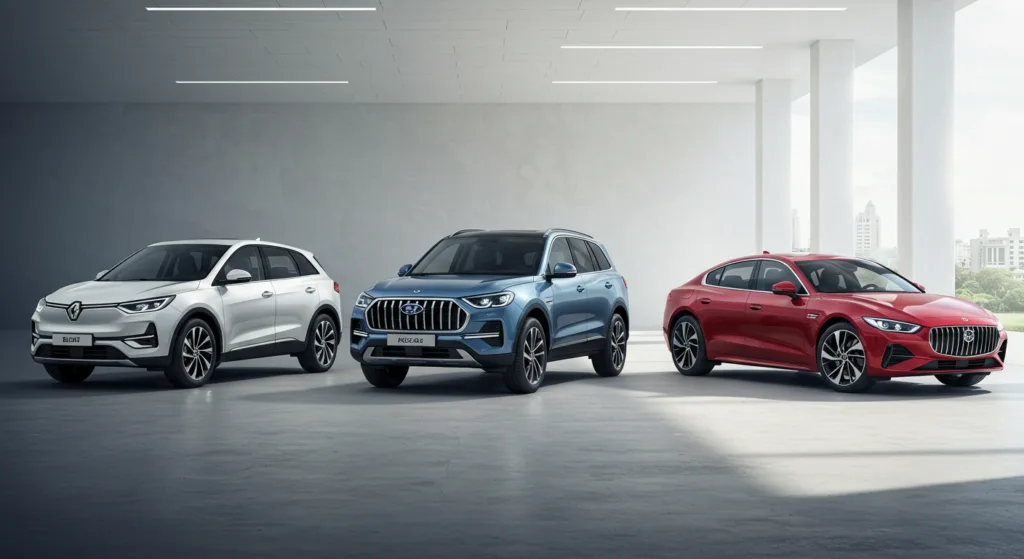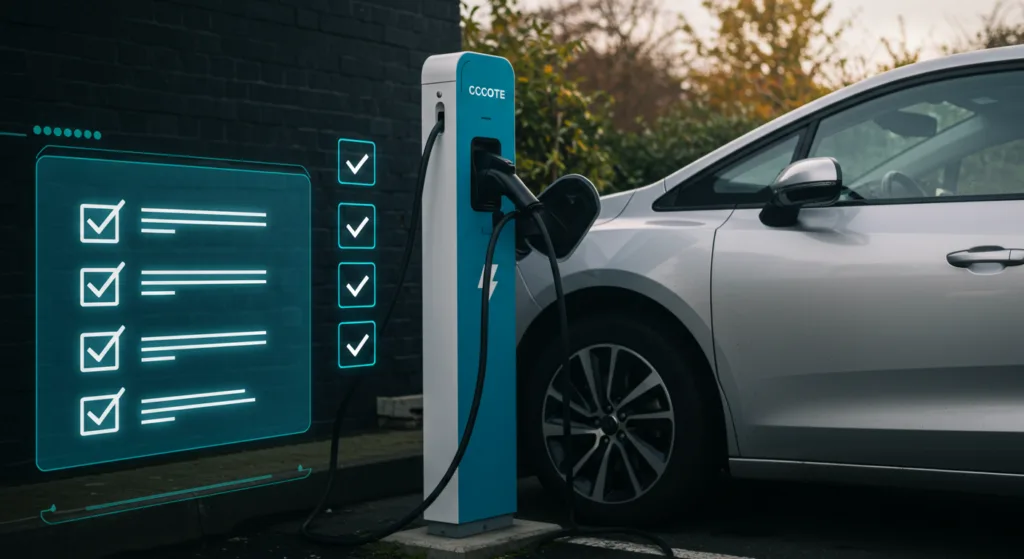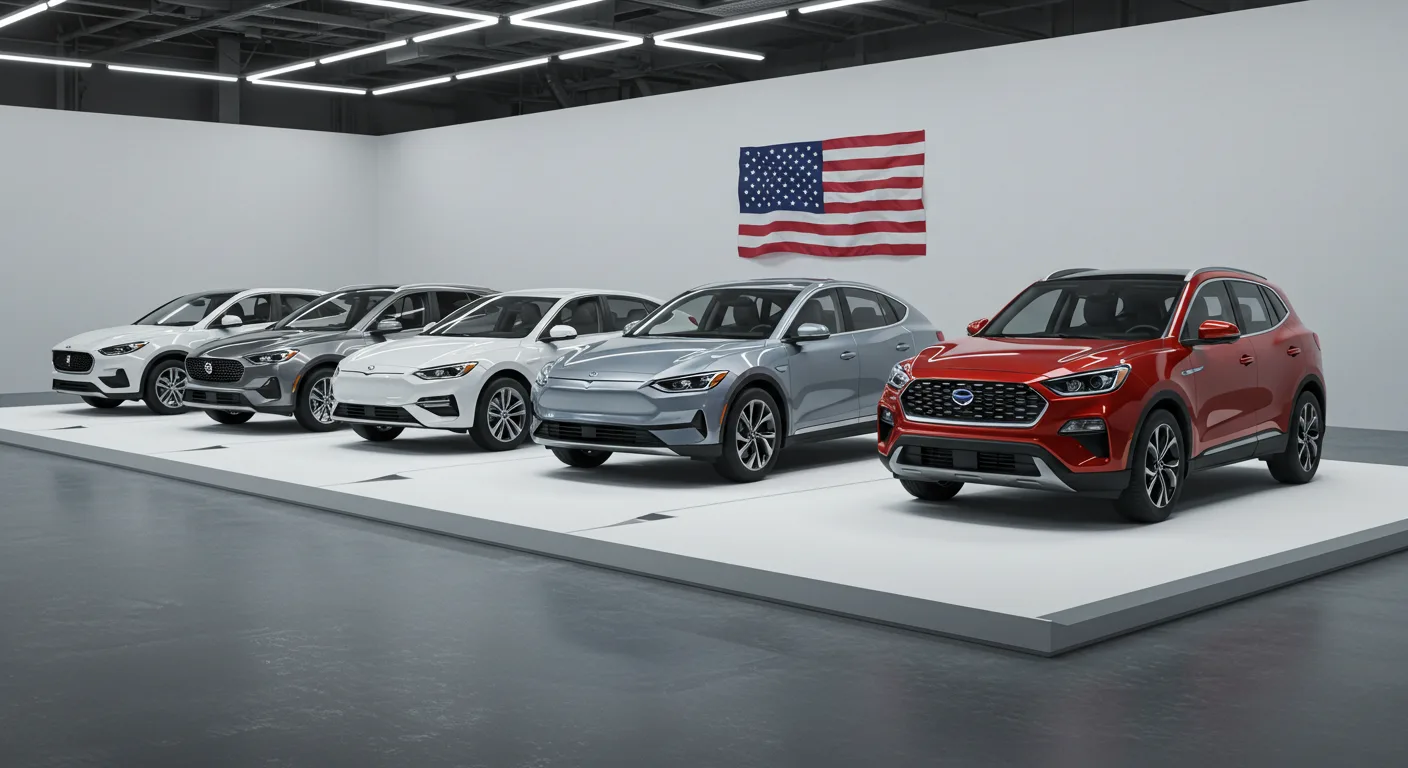Which Electric Cars Qualify for the $7,500 Federal Tax Credit in 2025?

While electric car sales are picking up pace around the nation, the $7,500 electric vehicle tax credit is still a deciding point for consumers. It’s not every electric vehicle, however—and for 2025, all the rules have changed. It’s well worth understanding what vehicles do qualify, and why, on a basis of saving money as well as avoiding sticker shock.
⚖️ The Basics: What Makes an EV Eligible?
With the 2022 Inflation Reduction Act, tax credit for electric vehicles has been revamped with a priority for home production, supply chain resilience, and income-eligibility. All these regulations are applicable for 2025.
To qualify for the full $7,500, an EV must meet two key requirements:
- Batteries Component Requirement (qualifies for $3,750): At least a percentage of components for the battery must be manufactured or assembled here within North America. That percentage is 60% for 2025, down from 50% for 2024.
- Critical Minerals Requirement (qualifies on bonus $3,750): At least, as specified, a percentage of minerals used for the EV battery (lithium, nickel, cobalt) must have been processed, extracted, or manufactured inside the U.S. or a free-trade agreement country. That also ramps up to 50% for 2025.
If an EV meets one but not both requirements, it may qualify for half the credit ($3,750).
🚘 Top Electric Cars That Qualify in 2025 (Full $7,500 Credit)
The following vehicles are among those assembled in North America and meet both mineral and battery component criteria as of 2025:
- Chevrolet Equinox EV – Made in Mexico; uses Ultium battery packs compliant with sourcing rules.
- Ford F-150 Lightning – Built in Michigan with U.S.-sourced materials and components.
- Tesla Model Y (AWD, Long Range) – Manufactured in Texas and Fremont, using battery components that meet both sourcing rules.
- Rivian R1T and R1S (Certain trims) – Some configurations now meet mineral content thresholds as Rivian expands sourcing from U.S. partners.
- Cadillac Lyriq – Assembled in Tennessee, using LG Energy Solution batteries with compliant mineral content.
🚗 EVs That May Only Qualify for a Partial Credit ($3,750)
Some popular models only meet one of the two conditions:
- Hyundai Ioniq 5 / 6 (U.S. production versions) – Now built in Georgia, but battery mineral sourcing may still fall short of requirements.
- Volkswagen ID.4 – Assembled in Chattanooga, TN, but certain trims and battery packs may not meet critical minerals requirement.
- Nissan Ariya – Japanese production limits eligibility; only trims with U.S.-sourced battery packs partially qualify.
In these cases, buyers may receive $3,750 instead of the full $7,500 credit.
🛑 EVs That Don’t Qualify at All in 2025
Several high-profile electric cars do not qualify for any portion of the federal tax credit due to foreign assembly or non-compliant supply chains:
- Toyota bZ4X – Assembled in Japan; ineligible under final assembly rules.
- Kia EV6 and EV9 (Korean models) – South Korea-built versions remain ineligible, though U.S. production is planned.
- BMW i4 and iX – Manufactured in Germany and lacks compliant mineral sourcing.
- Mercedes EQ series – Built outside North America with batteries from non-compliant suppliers.
If you’re considering one of these models, you’ll need to factor in no federal tax savings at the point of purchase.
🧾 Income and MSRP Caps Still Apply
Even if a car qualifies based on production and battery rules, you as the buyer must meet two financial limits:
- Adjusted Gross Income (AGI):
- $150,000 max for single filers
- $225,000 max for heads of household
- $300,000 max for joint filers
- Vehicle MSRP Limits:
- $55,000 for sedans and hatchbacks
- $80,000 for SUVs, trucks, and vans
These caps are strictly enforced, and your eligibility is verified at the point of sale or during tax filing—whichever applies.
How to Know If Your EV Is Eligible for the $7,500 Tax Credit

In 2025, not every electric vehicle automatically qualifies for the $7,500 federal tax credit—eligibility now depends on specific rules tied to the vehicle, battery materials, place of assembly, and even your income. If you’re thinking about buying an EV, here’s how to find out whether your car qualifies, step by step.
🔍 Step 1: Check Final Assembly Location
Your EV must be assembled in North America (U.S., Canada, or Mexico) to be eligible for any portion of the credit. The quickest way to check this is by using the Vehicle Identification Number (VIN).
You can enter the VIN on the U.S. Department of Energy’s official tool, or check the Monroney (window) sticker at the dealership, which lists the final assembly location.
Key Tip: Some models are built in multiple locations. For example, the VW ID.4 has both German and U.S. production. Only the Chattanooga-built versions qualify.
⚙️ Step 2: Confirm Battery Sourcing Requirements
The credit is split into two parts:
- $3,750 for battery components made or assembled in North America
- $3,750 for critical minerals sourced or processed in the U.S. or an FTA partner
In 2025, 60% of battery components and 50% of minerals must meet these criteria. This info isn’t always on the sticker, so check the IRS’s Clean Vehicle List, which is updated regularly with eligible models and trims.
Example: The Tesla Model Y Long Range meets both criteria in most trims, while the Hyundai Ioniq 5 might only qualify for one part—depending on production batch.
🧾 Step 3: Verify Income and MSRP Limits
Even if the car qualifies, you must also meet buyer requirements:
Income limits (Adjusted Gross Income):
- $150,000 for single filers
- $225,000 for heads of household
- $300,000 for joint filers
MSRP limits:
- $55,000 for sedans
- $80,000 for SUVs, trucks, and vans
Go over your last year’s tax return (Form 1040) to estimate your AGI and check vehicle pricing carefully—dealer markups don’t affect MSRP eligibility, but trim level upgrades might.
🛍️ Step 4: Use Point-of-Sale Eligibility at the Dealership
Starting in 2024 and continuing into 2025, the IRS allows instant rebates at the dealership for eligible EVs. This means you can apply the credit upfront—no need to wait until tax season.
However, the dealer must be registered in the IRS Energy Credits Online system. Always ask if the dealership is certified and whether they’ve already confirmed the car’s eligibility through that platform.
📄 Step 5: Keep Documentation
To avoid issues during tax filing, make sure to get and save:
- A copy of the purchase agreement showing the credit was applied
- The VIN of the vehicle
- A signed statement from the dealer (if using the point-of-sale credit)
You’ll need these if you’re claiming the credit on your tax return using IRS Form 8936.
What Are the Requirements to Claim the $7,500 EV Tax Credit This Year?

Qualifying for the $7,500 electric vehicle tax credit in 2025 is not as simple as buying any EV. The credit is now combined with strict qualifying requirements that not only involve your vehicle, but also your income, the price of your car, where your battery is made, and even where your car is manufactured. What you must qualify for is outlined below in plain language.
✅ 1. The Vehicle Must Be Assembled in North America
To qualify for any portion of the credit, your electric car must be assembled in the U.S., Canada, or Mexico. This rule excludes many popular EVs built overseas.
How to check: Use the car’s VIN in the U.S. Department of Energy’s VIN decoder or ask your dealer for the assembly location.
🔋 2. Battery and Mineral Content Requirements
The $7,500 credit is split into two parts:
- $3,750 for battery components: At least 60% of the components must be manufactured or assembled in North America.
- $3,750 for critical minerals: At least 50% of minerals (like lithium, cobalt, nickel) must be extracted or processed in the U.S. or a country with a free trade agreement.
If your EV meets only one of these two requirements, you may still qualify for half the credit ($3,750).
Note: These percentages increase annually, so it’s essential to confirm your specific model and trim on the IRS’s updated Clean Vehicle List.
🚘 3. The Car Must Fall Under MSRP Limits
Your EV must stay below the following manufacturer’s suggested retail price (MSRP) caps:
- $55,000 for sedans and hatchbacks
- $80,000 for SUVs, trucks, and vans
MSRP includes factory options but excludes taxes and dealer fees. Going over even by a few hundred dollars disqualifies the vehicle—so double-check trim levels and packages before signing.
👤 4. Buyer Income Limits Apply
Even if the vehicle qualifies, you as the buyer must fall under the Adjusted Gross Income (AGI) thresholds:
- $150,000 for single filers
- $225,000 for heads of household
- $300,000 for married couples filing jointly
You can use either your current or previous year’s income—whichever is lower—so plan accordingly if you’re near the limit.
💳 5. Buy From a Registered Dealer (If Using Instant Credit)
Since 2024, eligible buyers can receive the tax credit upfront as a point-of-sale rebate when purchasing from a dealer registered with the IRS.
The dealer applies the credit instantly and then gets reimbursed by the federal government. Always verify that your dealership is IRS-registered and confirm that the credit is applied before finalizing the purchase.
🧾 6. File the Right IRS Form
If you don’t use the point-of-sale rebate and plan to claim the credit on your taxes, you must:
- File IRS Form 8936 with your federal tax return
- Provide the Vehicle Identification Number (VIN)
- Retain the purchase documentation for proof of eligibility
This form calculates the actual credit you’re eligible for based on the vehicle and your income.
Knowing which EV models are eligible for the $7,500 tax credit in 2025 will save you plenty. Discover your eligibility by model, income, and battery source for your optimal return on investment for your new EV.



